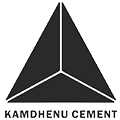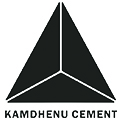Plain Cement Concrete, commonly known as PCC, plays a foundational role in construction. Whether it’s building homes, pavements, or industrial structures, PCC in construction ensures durability, stability, and cost-efficiency. In this blog, we’ll explore what PCC cement is, how it’s made, where it’s used, and why Kamdhenu PCC Cement—offered by one of the Best Cement Companies in India—is a trusted choice in the industry.
What is PCC Cement?
Unlike Reinforced Cement Concrete (RCC), plain cement concrete contains no steel bars. This makes it perfect for providing a strong, flat base for floors, foundations, and pavements where heavy loads aren’t directly supported. Think of PCC in construction as the unsung hero that creates a stable starting point for buildings. While PCC forms the base, many also wonder what is PPC cement and how it differs—PPC is a blended cement known for durability and eco-friendliness, often used in general construction.
How is PCC Cement Made?
Creating PCC cement is like following a recipe – precision ensures strength. Here’s what goes into the mix:
- Cement: Acts as the “glue.” Ordinary Portland Cement (OPC) is the most common.
- Sand (Fine Aggregate): Fills gaps between larger particles. It must be clean and dry.
- Coarse Aggregate: Crushed stone or gravel (usually 10-20mm size) adds bulk and strength.
- Water: Binds everything. It must be clean and free from impurities.
The magic lies in the PCC mix ratio. Common ratios include:
- M7.5 (1 part cement: 4 parts sand: 8 parts aggregate) – For light-duty work.
- M10 (1:3:6) – Ideal for most foundations.
- M15 (1:2:4) – Used where higher strength is needed, like industrial floors.
The right PCC concrete ratio ensures durability. For small projects, mixing can be done manually. For larger sites, mechanical mixers guarantee consistency.
Uses and Applications of PCC Cement
Plain cement concrete is everywhere in construction! Here’s where you’ll find it:
- Base for Foundations: Creates a solid, level layer before pouring RCC footings.
- Flooring & Pavements: Used under tiles, marble, or as a base for roads and sidewalks.
- Moisture Barrier: Prevents soil moisture from seeping into RCC structures.
- Pathways & Driveways: Affordable and durable for non-vehicular areas.
In pcc building construction, it’s the first layer after excavation. For example, in homes, pcc in building construction ensures the ground won’t shift or settle under your floors.
Preparation and Laying of PCC
Getting PCC construction right involves careful steps:
- Surface Prep:
- Compact and level the soil.
- Add a polythene sheet or anti-termite treatment to block moisture.
- Mixing:
- Follow the pcc concrete ratio strictly.
- Mix manually (for small areas) or with a concrete mixer (for large sites).
- Laying & Compacting:
- Pour the mix evenly.
- Use wooden screeds to level it.
- Compact with rollers or vibrators to remove air pockets.
- Curing:
- Keep the surface wet for 7–14 days.
- Cover with gunny bags or spray water to prevent cracks.
Proper curing is crucial – it boosts strength by 30%!
Benefits of Plain Cement Concrete
Choosing PCC in construction offers many benefits. Here’s why:
- Cost-Effective: No steel = lower material costs.
- Durability: Resists weathering, moisture, and chemicals.
- Easy to Use: Simple mixing and laying process.
- Stable Base: Prevents cracks in floors and walls.
- Versatility: Perfect for roads, floors, and drainage works.
In short, plain cement concrete is the go-to for reliable, budget-friendly foundations.
Drawbacks of Plain Cement Concrete
Despite its strengths, PCC cement has limits:
- Low Tensile Strength: Cracks under bending pressure (unlike RCC).
- Weight: Heavier than modern composites.
- Not for Load-Bearing: Never use it for beams, columns, or slabs.
- Cracking Risk: Poor curing leads to surface defects.
This is why pcc in building construction is restricted to bases and bedding layers.
How is PCC Different from RCC Cement?
Let’s understand the key differences between PCC (Plain Cement Concrete) and RCC (Reinforced Cement Concrete) in the table below:
| Feature | PCC (Plain Cement Concrete) | RCC (Reinforced Cement Concrete) |
| Reinforcement | None | Steel bars/mesh |
| Strength | Good in compression, weak in tension | Strong in both |
| Use Case | Foundations, flooring bases | Beams, columns, slabs |
| Use Case | Lower | Higher (due to steel) |
Plain cement concrete handles compression but needs steel reinforcement (RCC) for structural loads. So, while PCC construction provides the base, RCC builds the skeleton.
Factors That Affect the Quality of PCC Cement
Want long-lasting PCC cement? Control these:
- Material Quality: Use clean aggregates and fresh cement (like Kamdhenu!).
- Mix Ratio: Stick to the PCC mix ratio – deviations weaken the concrete.
- Water-Cement Ratio: Too much water = cracks. Aim for 0.45–0.6.
- Compaction: Poor compaction creates air voids.
- Curing: Skimping on curing reduces strength by 50%.
Fact: A well-made plain cement concrete base can last 50+ years.
Why Choose Kamdhenu PCC Cement?
Kamdhenu Cement offers high quality cement ideal for plain cement concrete works. Here’s why builders prefer Kamdhenu PCC Cement:
- Superior Strength: Consistent 53- PPC Cement Grade for robust bases.
- Workability: Smooth mixing and easy leveling.
- Affordability: High quality without premium costs.
- Trusted Nationwide: Used in 50,000+ projects across India.
Whether it’s a home foundation or a factory floor, Kamdhenu PCC Cement ensures your PCC building construction starts strong.
Conclusion
Plain cement concrete (PCC) is the silent champion of construction. From stabilizing floors to supporting pavements, PCC in construction delivers unmatched reliability for non-structural applications. Remember: its success hinges on the right PCC concrete ratio, quality materials, and patient curing.
When you choose Kamdhenu PCC Cement, you’re not just laying concrete – you’re building resilience. For foundations that stand the test of time, start with Kamdhenu.
Ready to build strong? Contact Kamdhenu Cement to know the PPC cement price today!


